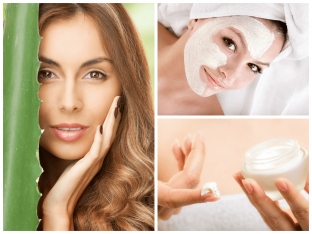One of the most famous, wise and strong women in the world once said the phrase "There are no ugly women, there are lazy ones." Coco Chanel knew very well what she was talking about, because her words now take on a special meaning. The beauty market is so overflowing with an abundance of products and offers that every woman can choose those products and treatments that suit her skin type, mood and wallet.
And one of the most important tasks of cosmetologists today is to help each of his patients choose the right products for her. In this article, estet-portal.com talks about how to choose the right cosmetics with hydroxyslots for each individual patient.
Hydroxy acids in modern cosmetology: instructions for use
From the point of view of biochemistry, hydroxy acids are derivatives of carboxylic acids, the molecule of which contains, in addition to the carboxyl group, one or more hydroxyl groups.
The widespread use of hydroxy acids in cosmetology is due to their effective effect not only on the surface, but also on the deep layers of the skin.
Among the many types of these acids, only some alpha- and beta-hydroxy acids are widely used in cosmetology. They affect the skin in different ways, so the beautician must understand what kind of acid should be in the composition of the cosmetic product in order to most effectively eliminate the problem of a particular patient.
Hydroxyacids:
- what is the difference between alpha and beta hydroxy acids;
- what effect do different types of hydroxyacids have on the skin;
- how to choose the right products containing hydroxy acids.
Read also: ABC of the skin for a cosmetologist (Part 1): the structure of the epidermis
What is the difference between alpha and beta hydroxy acids
Among the many hydroxy acids, the most common in cosmetology are alpha hydroxy acids (fruit, AHA acids), and beta hydroxy acids (BHA acids). In the world of cosmetology, fruit or AHA acids include malic, lactic, glycolic, mandelic, tartaric, and citric acids. The most common BHA in cosmetics is salicylic acid.
The fundamental difference between AHA and BHA lies in their solubility: alpha hydroxy acids are water soluble, so they do not penetrate into the pores, act on the surface of the skin and in high concentrations in the dermis, and beta hydroxy acids – fat-soluble, able to act inside the pores and penetrate the dermis.
What effect do different types of hydroxy acids have on the skin
Alpha- and beta-hydroxy acids have different effects on the patient's skin.
The main actions of fruit acids are:
- exfoliation;
- stimulation of the synthesis of elastin, collagen, ceramides and hyaluronic acid;
- stimulation of regeneration processes;
- moisturizing;
- lightening;
- antioxidant protection;
- anti-age effect.
In turn, beta-hydroxy acids are capable of:
- deeply cleanse pores by dissolving fat;
- reduce oily skin;
- normalize the functioning of the sebaceous glands;
- fight microbes and eliminate inflammation;
- prevent acne.

How to choose the right products that contain hydroxy acids
Cosmetic products containing AHA or BHA hydroxy acids should be selected based on the specific skin problems the patient came to the specialist with. AHAs are suitable for patients with dry or normal skin, healthy young skin without major imperfections, or aging skin that needs a treatment to combat photoaging, wrinkles, or age spots. BHA acids are optimally suited for patients with oily and problematic skin to combat acne, blackheads, clogged and enlarged pores, rosacea and milia.
If the patient's skin is oily but shows signs of aging such as wrinkles or pigmentation, AHAs and BHAs should be combined in care.
The patient will be able to evaluate a noticeable effect after using products with hydroxy acids fairly quickly, and if used correctly, it will last a long time.
You might be interested in:







Add a comment